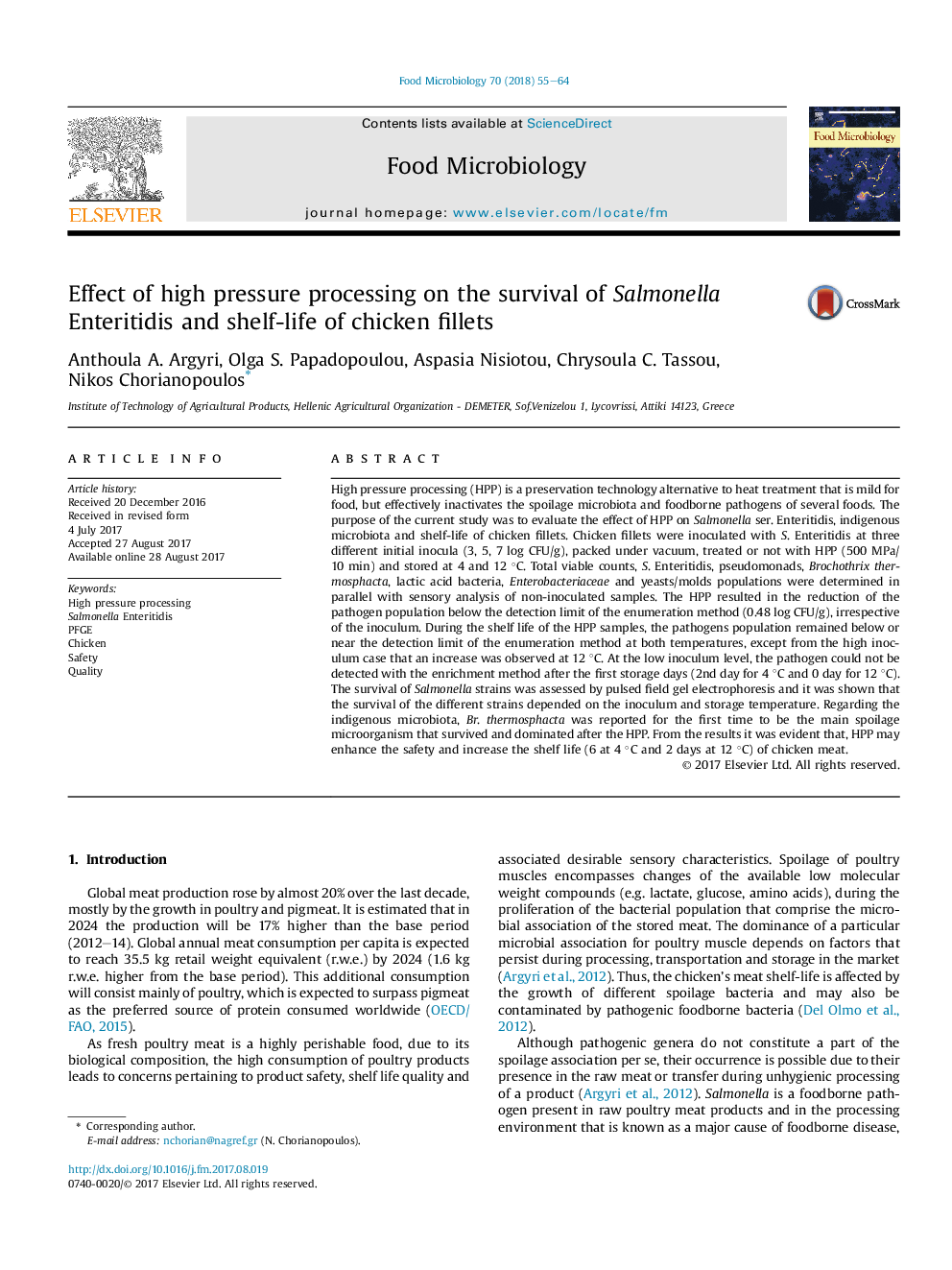| کد مقاله | کد نشریه | سال انتشار | مقاله انگلیسی | نسخه تمام متن |
|---|---|---|---|---|
| 5740007 | 1616231 | 2018 | 10 صفحه PDF | دانلود رایگان |

- High Pressure Processing may increase the shelf life and enhance the safety of chicken meat.
- The HPP treatment resulted in the reduction of the pathogen population below the detection limit for all inocula at 4 °C.
- The survival of different Salmonella strains was depended on the inoculum and storage temperature conditions.
- Shelf-life of chicken fillets was extended when treated at 500 MPa for 10 min, by 6 and 2 days, at 4 and 12 °C, respectively.
High pressure processing (HPP) is a preservation technology alternative to heat treatment that is mild for food, but effectively inactivates the spoilage microbiota and foodborne pathogens of several foods. The purpose of the current study was to evaluate the effect of HPP on Salmonella ser. Enteritidis, indigenous microbiota and shelf-life of chicken fillets. Chicken fillets were inoculated with S. Enteritidis at three different initial inocula (3, 5, 7 log CFU/g), packed under vacuum, treated or not with HPP (500 MPa/10 min) and stored at 4 and 12 °C. Total viable counts, S. Enteritidis, pseudomonads, Brochothrix thermosphacta, lactic acid bacteria, Enterobacteriaceae and yeasts/molds populations were determined in parallel with sensory analysis of non-inoculated samples. The HPP resulted in the reduction of the pathogen population below the detection limit of the enumeration method (0.48 log CFU/g), irrespective of the inoculum. During the shelf life of the HPP samples, the pathogens population remained below or near the detection limit of the enumeration method at both temperatures, except from the high inoculum case that an increase was observed at 12 °C. At the low inoculum level, the pathogen could not be detected with the enrichment method after the first storage days (2nd day for 4 °C and 0 day for 12 °C). The survival of Salmonella strains was assessed by pulsed field gel electrophoresis and it was shown that the survival of the different strains depended on the inoculum and storage temperature. Regarding the indigenous microbiota, Br. thermosphacta was reported for the first time to be the main spoilage microorganism that survived and dominated after the HPP. From the results it was evident that, HPP may enhance the safety and increase the shelf life (6 at 4 °C and 2 days at 12 °C) of chicken meat.
Journal: Food Microbiology - Volume 70, April 2018, Pages 55-64